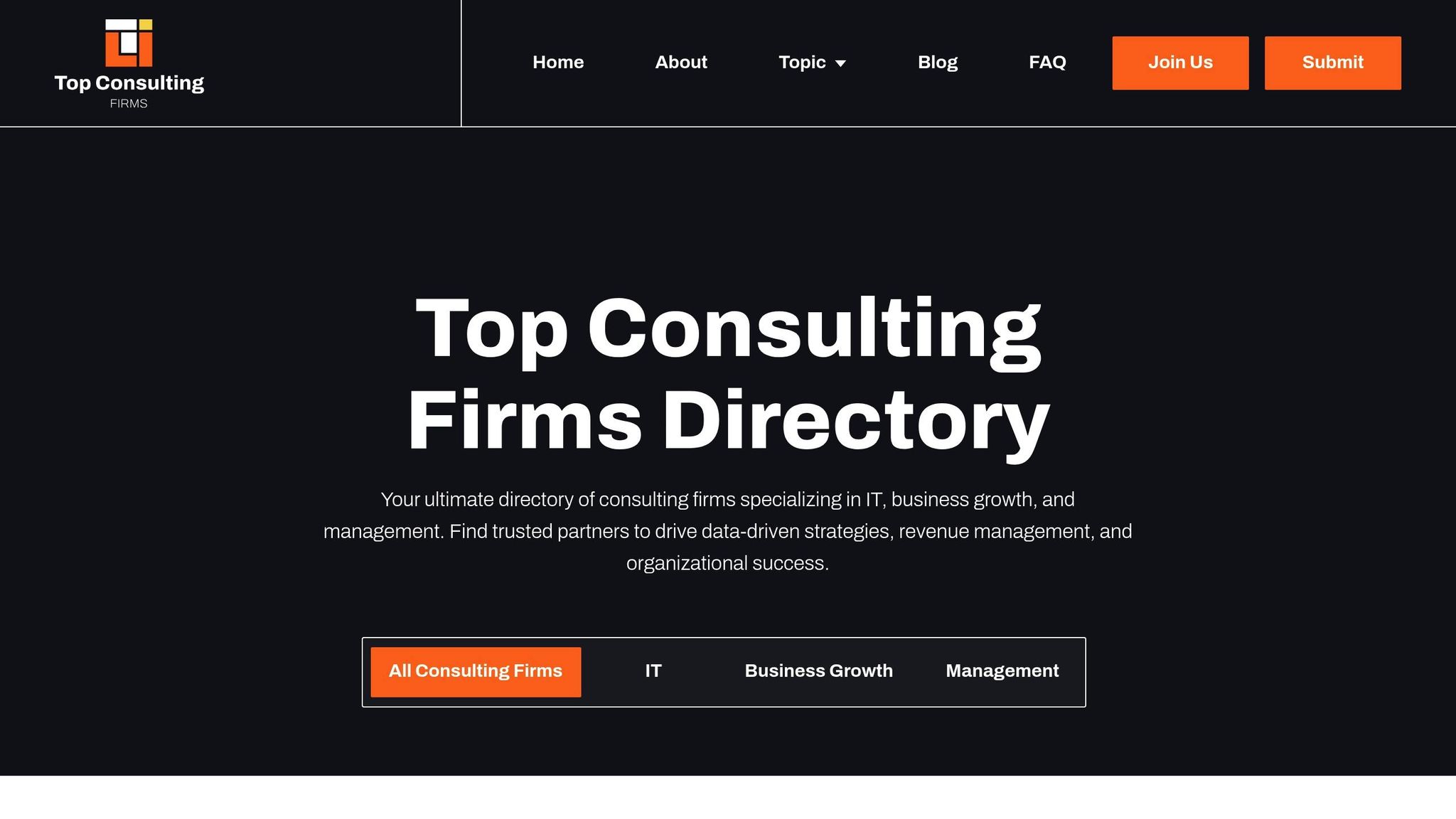When selling or transferring your business, taxes can significantly reduce your take-home proceeds. Tax-efficient exit strategies help you minimize this burden by leveraging methods like share sales, Qualified Opportunity Zones (QOZs), and estate planning tools. Here's what you need to know:
- Why it matters: Poor planning can cost you up to 50% of your earnings in taxes. Key liabilities include capital gains taxes, depreciation recapture, and estate taxes.
- Common options: Share sales typically offer lower tax rates (15–20%), while asset sales often result in higher taxes due to depreciation recapture and possible double taxation. Employee Stock Ownership Plans (ESOPs) and Section 1202 Qualified Small Business Stock (QSBS) exclusions can provide significant tax savings.
- Timing and preparation: Start planning 3–5 years in advance to take full advantage of tax-saving opportunities like expanded estate tax exclusions or Section 1202 benefits.
The structure of your exit - whether a share sale, asset sale, ESOP, or family succession - has a major impact on your tax obligations. Engaging experienced legal, tax, and financial advisors early is crucial to optimize your strategy and ensure compliance.
Quick Tip: Strategies like estate freezes, gifting, and reinvesting proceeds in qualified securities can save you thousands in taxes. Don't rush your exit - careful planning pays off.
Key Methods for Tax-Efficient Business Exits
Share Sale vs. Asset Sale
The way you structure the sale of your business - whether as a share sale or an asset sale - has a major influence on your tax obligations. A share sale involves transferring ownership of the entire company. This type of transaction often qualifies for long-term capital gains treatment, with federal rates up to 20%, plus an additional 3.8% Net Investment Income Tax for high earners. This structure is particularly favorable for S corporations, as it avoids the double taxation that C corporations may face.
On the other hand, an asset sale allows buyers to pick specific assets while avoiding liabilities. However, this can lead to much higher tax burdens for sellers, especially in C corporations. In these cases, the corporation pays taxes on the gains from selling its assets, and then shareholders are taxed again when proceeds are distributed. This double layer of taxation can result in effective tax rates exceeding 50%. Additionally, asset sales may involve depreciation recapture, where previously claimed depreciation is taxed as ordinary income - potentially reaching rates as high as 37%.
| Sale Structure | Tax Treatment for Seller | Key Advantages | Main Drawbacks |
|---|---|---|---|
| Share Sale | Capital gains rates (up to 23.8%) | Lower seller taxes, clean exit | Buyer assumes all liabilities |
| Asset Sale | Mixed rates; risk of double taxation | Buyer can select specific assets | Higher seller taxes and depreciation recapture |
Next, let’s look at how Section 1202 can offer similar tax relief for business owners.
Using Lifetime Capital Gains Exemption (LCGE)
Section 1202 of the Internal Revenue Code - commonly known as the Qualified Small Business Stock (QSBS) benefit - offers substantial tax savings for eligible business owners. This provision allows for the exclusion of up to 100% of capital gains from the sale of qualified small business stock. The exclusion is capped at $10 million or ten times your stock basis, whichever is greater.
To qualify, your business must meet specific criteria:
- Be structured as a C corporation.
- Have gross assets of $50 million or less when the stock is issued.
- Shares must be acquired at original issuance and held for at least five years.
The five-year holding period makes early planning essential. If you don’t plan far enough in advance, you could miss out on these benefits altogether.
Succession Planning and Estate Freeze
If you’re planning to transfer your business to family members, succession planning can help reduce estate and gift taxes while ensuring the business remains intact. An estate freeze is a common strategy to achieve this. By locking in the current value of your business for tax purposes, you shift future growth to your heirs. This approach reduces the taxable portion of your estate, potentially saving a significant amount in estate taxes, especially given recent changes to federal estate tax exclusions.
For instance, a family-owned manufacturing business used an estate freeze to transfer future growth to the next generation. This not only reduced the owner’s taxable estate but also resulted in notable estate tax savings.
Gifting strategies can complement an estate freeze. Options include:
- Annual gift tax exclusions.
- Grantor Retained Annuity Trusts (GRATs).
- Family Limited Partnerships that take advantage of valuation discounts.
Starting succession planning early is critical. Multi-year strategies and anticipated 2025 tax law changes make it important to act soon. For tailored advice, consult specialists listed in The Top Consulting Firms Directory.
Tax Planning and Compliance for Exits
Key Tax Planning Questions
Before diving into the exit process, there are several critical tax-related questions you need to address. These decisions could significantly impact how much of your proceeds you get to keep versus what goes to taxes.
When is the best time to exit to reduce taxes? Timing plays a huge role in minimizing tax exposure. Selling your business before potential tax rate hikes or during periods of high valuation can make a massive difference. To take full advantage, start planning 3–5 years in advance.
How should you value your business for tax efficiency? The valuation method you choose can influence your tax outcome. For example, asset-based valuations may favor certain transaction structures, while earnings-based methods might work better for others. Knowing the differences allows you to select the approach that aligns with your tax strategy.
What exit structure best minimizes taxes? Beyond a straightforward sale, options like Employee Stock Ownership Plans (ESOPs), family succession plans, or Qualified Opportunity Zone investments each come with unique tax implications. Choosing the right structure can help preserve more of your proceeds.
Can you take advantage of specialized tax benefits? For example, Section 1202 Qualified Small Business Stock exclusions can eliminate up to 100% of your capital gains if you meet the criteria. Other strategies, like 1031 exchanges or investing in Qualified Opportunity Zones, can defer or reduce taxes on your sale profits.
How do state and federal taxes impact your net proceeds? State taxes can take a surprising bite out of your earnings. Some business owners even relocate to states with lower taxes before selling, potentially saving hundreds of thousands of dollars. Don’t forget to factor in federal capital gains rates, depreciation recapture, and the 3.8% Net Investment Income Tax for high earners.
What are your estate planning goals? Your exit strategy should align with your plans for transferring wealth. For instance, the annual gift tax exclusion of $17,000 per person can help you gradually transfer assets over time.
Answering these questions early on will help you shape a tax strategy that not only complies with regulations but also maximizes your after-tax proceeds.
Compliance Steps for U.S. Business Exits
Proper compliance is about more than avoiding penalties - it ensures your transaction goes smoothly without unexpected delays or tax surprises that could reduce your earnings.
- Secure IRS tax clearance. Confirm that your business has no unresolved federal tax obligations before finalizing the sale. Without this, buyers might hesitate to close the deal, or you could face personal liability for unpaid taxes.
- Settle payroll and sales tax obligations. Any outstanding liabilities could follow you post-sale if not addressed beforehand.
- Complete all final tax filings and handle license transfers or cancellations.
- Terminate employee benefit plans properly. If your business has retirement plans like a 401(k), you’ll need to terminate them and manage account distributions in line with Department of Labor rules.
- Maintain detailed records of tax payments and filings. Keep financial statements, recent tax returns, asset registers, and proof of settlements. These records are essential for tax reporting, buyer due diligence, and protecting yourself from future audits.
Taking these steps ensures your exit is as seamless as possible.
Working with Legal and Financial Advisors
Taxation during a business exit is complex, and working with the right advisors can make all the difference. They don’t just help you comply with regulations - they can uncover opportunities to save money and structure your exit for maximum benefit.
- Engage advisors early - ideally 2–3 years before your planned exit. This gives them time to model scenarios, make structural adjustments, and position your business for tax-efficient outcomes.
- Hire specialists with experience in business exits. General tax preparers or attorneys may not have the expertise needed for intricate strategies like Section 1202 planning or multi-state tax issues. Choose professionals who understand the nuances of exit transactions.
- Use financial modeling to evaluate your options. Advisors can compare after-tax proceeds for different scenarios, such as asset sales versus stock sales, immediate sales versus installment sales, or traditional sales versus ESOPs. This helps you make informed decisions based on hard numbers.
- Let experts handle compliance and documentation. This reduces the risk of IRS challenges or disputes after the sale.
For additional support, check out the Top Consulting Firms Directory, which connects business owners with firms that specialize in tax planning, legal structuring, and exit strategies. These experts can help you navigate the complexities of tax regulations while ensuring you keep as much of your proceeds as possible.
Greg Smith on How to Achieve a Tax Efficient Business Exit | Tax Exit Strategies
sbb-itb-97f6a47
Comparison of Exit Strategies
When deciding how to transition out of a business, understanding the trade-offs between different exit strategies is crucial. The right strategy should align with your financial goals, tax considerations, and vision for the business's future. Each option comes with its own set of advantages and challenges, particularly in areas like tax impact, speed, complexity, and business continuity. The table below provides a snapshot of these differences to help you weigh your options.
Exit Strategy Comparison Table
| Exit Strategy | Tax Efficiency | Speed | Payout Size | Business Continuity | Complexity | Regulatory Demands |
|---|---|---|---|---|---|---|
| Third-Party Sale (Stock) | High | Moderate | High | Low–Moderate | Moderate | Moderate |
| Third-Party Sale (Asset) | Low–Moderate | Moderate | Moderate–High | Low | Moderate | High |
| Merger & Acquisition | Moderate–High | Slow–Moderate | High | Moderate | High | High |
| ESOP (Employee Buyout) | High | Slow | Moderate | High | High | High |
| Family Succession | Variable | Slow | Low–Moderate | High | High | Moderate–High |
| Liquidation | Low | Fast | Low | None | Low | Moderate |
Stock sales are often the most favorable for sellers from a tax perspective. Proceeds are typically taxed at lower long-term capital gains rates, which can significantly reduce the tax burden. However, buyers usually prefer asset sales because they can depreciate the acquired assets, making the deal more advantageous for them. Unfortunately for sellers, asset sales often result in double taxation - once at the company level and again on shareholder distributions - leading to a higher overall tax bill.
Employee Stock Ownership Plans (ESOPs) provide notable tax benefits. Under Section 1042, sellers can defer capital gains taxes indefinitely by reinvesting the proceeds into qualified securities. That said, setting up an ESOP is a lengthy process requiring strict compliance with IRS and Department of Labor rules.
Mergers and acquisitions (M&A) can yield substantial payouts, especially when your business holds strategic value for the buyer. The tax implications depend on whether the transaction is structured as a stock or asset sale and the type of payment received (e.g., cash, stock, or a combination). These deals often involve complex negotiations and regulatory hurdles but can be highly rewarding.
Family succession offers a personalized approach, allowing you to use tools like Grantor Retained Annuity Trusts (GRATs) and gradual ownership transfers to reduce estate and gift taxes. However, this option requires careful planning to manage family dynamics and ensure the business remains viable for the next generation.
Liquidation, while fast, is typically the least appealing option. Assets are sold off individually, often at a discount, resulting in lower overall proceeds. Additionally, much of the income from liquidation is taxed at ordinary income rates rather than the more favorable capital gains rates.
The speed of the transaction and its impact on business continuity also vary widely. Liquidation is quick but leaves no room for legacy preservation, while strategies like ESOPs and family succession take time but ensure the business continues under familiar leadership. Third-party sales and M&A deals fall somewhere in between, with continuity largely dependent on the buyer's intentions.
For tailored advice, consider consulting with specialized professionals who can model various scenarios and provide a clear picture of the after-tax proceeds for each option. Expert guidance can help you make informed decisions based on numbers rather than assumptions. Visit the Top Consulting Firms Directory to connect with experienced advisors who understand these complexities.
Using Expert Advisory Resources
Navigating the maze of tax-efficient business exits takes more than just basic accounting know-how. Without proper planning, hefty tax liabilities can eat into your sale proceeds. However, bringing in the right advisors early can help reduce, defer, or even eliminate a significant portion of these taxes. The difference between a well-thought-out exit and a rushed one often boils down to having the right experts on your side.
Using the Top Consulting Firms Directory

The Top Consulting Firms Directory is a go-to resource for business owners looking for expert help with tax-efficient exit planning. This online tool connects businesses with top-tier consulting firms specializing in key areas like M&A, financial advisory, strategy consulting, and tax planning.
Choosing the right advisor can make or break your exit strategy. The directory offers a handpicked selection of firms with proven expertise in exit planning. These firms include specialists in tax consulting, strategy, M&A, and growth strategies across various industries.
Instead of spending months researching firms or relying solely on referrals, the directory simplifies the process. It helps you quickly pinpoint advisors with the exact skills you need, saving time and boosting your chances of finding professionals who understand the intricate details of tax-efficient exits. These experts work seamlessly as part of your broader tax strategy, ensuring every aspect of your exit plan aligns perfectly.
Benefits of Partnering with Specialized Advisors
Once you’ve identified the right advisors, understanding the value they bring is crucial. Experienced advisors turn exit planning into a precise, data-driven process. They come equipped with deep expertise in tax law, deal structuring, and compliance, helping you avoid costly missteps while uncovering opportunities for tax savings. Advisors can model different scenarios, estimate after-tax proceeds, and ensure all regulatory requirements are met, leading to smoother transactions and better financial outcomes.
For the best results, business owners should engage advisors 1–3 years before their planned sale. This allows enough time to implement advanced tax-saving strategies like ESOPs, GRATs, or family limited partnerships, which require specialized expertise to execute correctly.
Advisors provide a thorough analysis that includes business valuations, tax impact estimates, scenario comparisons for various exit structures, and detailed timelines for execution. This data-driven approach helps you make informed decisions grounded in real numbers instead of guesswork. They can show you exactly how much you’ll take home under different scenarios, factoring in federal taxes, state taxes, and potential deferrals.
Beyond tax savings, these professionals optimize deal structures, negotiate favorable terms, and manage stakeholder communications to ensure a smooth transition. They stay up-to-date on federal and state tax laws, guide you through necessary documentation, and collaborate with legal counsel to ensure accurate and timely filings. This minimizes the risk of audits, penalties, or disputes that could surface long after the sale.
Without expert guidance, business owners often miss key tax-saving opportunities, misclassify transactions, or overlook compliance requirements. These missteps can result in higher tax bills or delayed closings. Given the complexity of today’s tax laws, even seasoned business owners can overlook strategies that might save them significant amounts of money. Advisors help avoid these pitfalls by conducting in-depth due diligence, modeling tax outcomes, and addressing legal and financial risks proactively.
Investing in high-quality advisory services often pays off many times over through tax savings, better deal terms, and reduced risks. The way your business is structured and how you handle the sale can determine whether you pay ordinary income tax rates or capital gains rates. With expert guidance, you can make sure you’re walking away with the best possible outcome.
Conclusion
Planning a tax-efficient business exit isn't just about getting the highest sale price - it’s about keeping more of what you earn. The strategies discussed here could mean the difference between losing 20–28% or more of your proceeds to taxes and walking away with a much larger share.
A key takeaway is that the structure of your transaction plays a critical role in determining whether you’ll face ordinary income or capital gains taxes, which has a major impact on your net proceeds. For instance, structuring your exit as a share sale may allow you to qualify for the §1202 Qualified Small Business Stock exclusion. Similarly, using an estate freeze could help reduce future tax burdens, or you might leverage the Lifetime Capital Gains Exemption. No matter the approach, timing and preparation are essential.
The 2025 One Big Beautiful Bill Act has also introduced new opportunities, such as permanent corporate tax rates and expanded estate tax exclusions. However, these benefits are only accessible if your exit strategy is designed to take advantage of them.
On the other hand, rushing through an exit can lead to pitfalls like double taxation, missed exemptions, and long-term compliance issues that could undermine your financial security.
The difference between a smooth, tax-efficient exit and a rushed, costly one often lies in working with skilled tax, legal, and financial advisors. These professionals can help you navigate the latest tax laws and model different scenarios to find the best path forward. Resources like the Top Consulting Firms Directory can connect you with experts who specialize in exit planning.
From ESOPs and Qualified Opportunity Zones to succession planning and estate freezes, the strategies discussed here require specialized expertise to implement effectively.
Start now: set clear financial goals, obtain an accurate valuation, and enlist experienced advisors. Taking this methodical approach can help ensure your exit strategy achieves both financial success and long-term peace of mind.
FAQs
What are the main tax differences between selling shares and selling assets when exiting a business?
When leaving a business, the tax outcomes of a share sale versus an asset sale can differ quite a bit. With a share sale, the seller usually pays capital gains tax on the profit from selling their shares. Depending on how long the shares were held, this might qualify for lower tax rates. This option often works in the seller's favor but can leave the buyer responsible for any existing liabilities tied to the business.
On the other hand, an asset sale involves selling the business's individual assets. The tax treatment here depends on the type of asset - inventory might be taxed as ordinary income, while equipment could fall under capital gains tax. This structure can be appealing for buyers, as it often allows for higher depreciation deductions. However, it may mean a heavier tax bill for the seller. To figure out the best approach for your situation, it's essential to work with a tax professional who can guide you through the complexities.
What is Section 1202 Qualified Small Business Stock, and how can it help reduce taxes during a business exit?
Section 1202 of the Internal Revenue Code offers a valuable tax advantage for business owners by allowing them to exclude up to 100% of the capital gains from selling Qualified Small Business Stock (QSBS), provided certain conditions are met. This can significantly lower tax obligations during a business sale.
To qualify, the stock must satisfy several criteria: it must be issued by a domestic C corporation, held for at least five years, and acquired directly from the company in exchange for cash, property, or services. If these requirements are met, the exclusion can apply to the greater of $10 million or 10 times the adjusted basis of the stock - resulting in considerable tax savings. It's essential to work with a tax professional to ensure all conditions are met and to fully take advantage of this benefit.
How can advisors help create a tax-efficient business exit, and when should you involve them?
Advisors are key players when it comes to crafting a tax-savvy plan for exiting your business. They bring expertise to the table, helping you structure the sale, take advantage of tax breaks, and reduce liabilities - all aimed at boosting your financial gains. With their guidance, you can confidently tackle the maze of tax regulations, staying compliant while working toward the best possible outcome.
Getting advisors involved early - ideally 1 to 2 years before the sale - can make a big difference. This timeline gives them enough room to evaluate your business structure, identify tax-saving strategies, and create a customized plan that aligns with your objectives.


